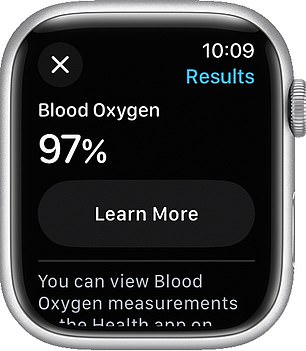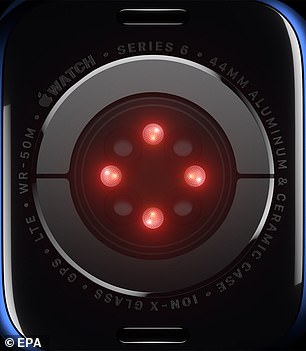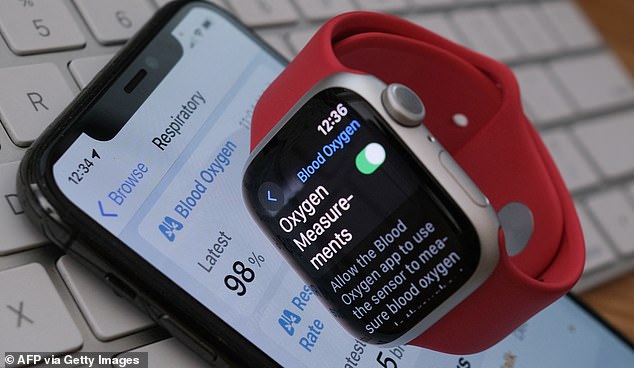Apple Watch’s now-deprecated blood oxygen feature helps save woman’s life after she collapsed on flight to Italy
The Apple Watch’s now reduced blood oxygen function is credited with saving a woman’s life when she became unresponsive during a flight.
The unnamed British woman, 70, suffered from shortness of breath on a flight from Britain to Italy on January 9, prompting flight attendants to seek an onboard doctor to assist with the emergency.
Fellow passenger and National Health Service (NHS) doctor Rashid Riaz came to her aid and asked the flight crew if they had an Apple Watch to monitor the woman’s vital signs.
The blood oxygen function measures the percentage of oxygen that your red blood cells transport from your lungs to the rest of the body. Low levels are associated with respiratory problems.
Riaz said the Apple Watch helped him identify the woman’s low oxygen saturation, allowing him to take further steps to maintain levels until the plane landed safely.
There are countless examples of how the Apple Watch has saved lives, but the blood oxygen monitor has been removed from new models due to a patent infringement lawsuit.
Apple’s blood-oxygen feature helped a doctor save a woman’s life on a Ryanair flight to Italy
Apple was forced to drop the feature last week or was banned from selling smartwatches. A federal court rejected Apple’s appeal to continue the pause.
The move is part of an ongoing lawsuit with biotech startup Masimo, which accused the tech giant of entering into talks with it about a potential partnership only to steal the biotech startup’s idea and poach some of its engineers take to implement it.
Although the blood oxygen feature is disabled in the new Apple Watch Series 9 and Ultra modes, it still works on previously purchased devices.
The January flight was en route to Verona, Italy from Birmingham, UK, when the woman began experiencing health problems while traveling with her husband.
Riaz immediately stepped in to help after being told a doctor was needed and knew the Apple Watch with the blood oxygen sensor was the best tool on the plane.
“Thanks to the Apple Watch, I found out that the patient had low oxygen saturation,” Riaz said BBC.
“I used a lot of my own knowledge of how to use the gadget on this flight,” he added.
Riaz, an internal medicine specialist at Hereford County Hospital in Britain, used the app to help him stabilize her oxygen levels until the plane landed in Italy.
The woman received immediate medical attention and is expected to make a full recovery The New York Post.


Apple was forced to disable its blood-oxygen function amid legal battles with a medical technology company, Masimo
The blood oxygen app uses red and green light sensors to shine on the blood vessels in the wearer’s wrist and measure how much light bounces back.
Because oxygen-rich and oxygen-poor blood absorb red and green light differently, the light that reflects back to the watch will determine the color of the person’s blood.
Bright red means the blood is oxygen-rich, while dark red blood means it contains less oxygen. Typical oxygen levels are between 95 and 100 percent.
Apple said that “measurements taken with the blood oxygen app are not intended for medical use,” and are designed for fitness and wellness only.

There are countless examples of how the Apple Watch has saved lives, but the blood oxygen monitor has been removed from new models due to a patent infringement lawsuit
Although the feature saved the day on the run, it is no longer available in new Apple Watches after the US International Trade Commission sided with Masimo’s claims that Apple had infringed on its patent for blood-oxygen monitoring technology.
Apple said Masimo’s claims were false and that the blood oxygen app, also known as pulse oximeter, works well for users and can be used to save lives.
The incident on the Ryanair flight happened on January 9, before Apple discontinued the blood oxygen feature in the US, but for now it still works for people who already own older Apple Watch models.
Because the court ruling only applies to Apple Watches sold in the US, the Blood Oxygen app is still available on models sold abroad.
News of the Apple Watch’s role in saving the woman’s life comes just a week after Masimo CEO Joe Kiani said Bloomberg: ‘Apple presents its offering to consumers as a reliable, medical pulse oximeter, even though it is not.’
He continued: ‘I really believe that consumers are better off without it.’
However, on the importance of smartwatch sensors, Riaz told the BBC: “It’s a lesson in how we can improve in-flight travel (with) these types of emergencies (via) a basic gadget that is easily available today.”
Dailymail.com has contacted Apple, Masimo and Ryanair for comment.
